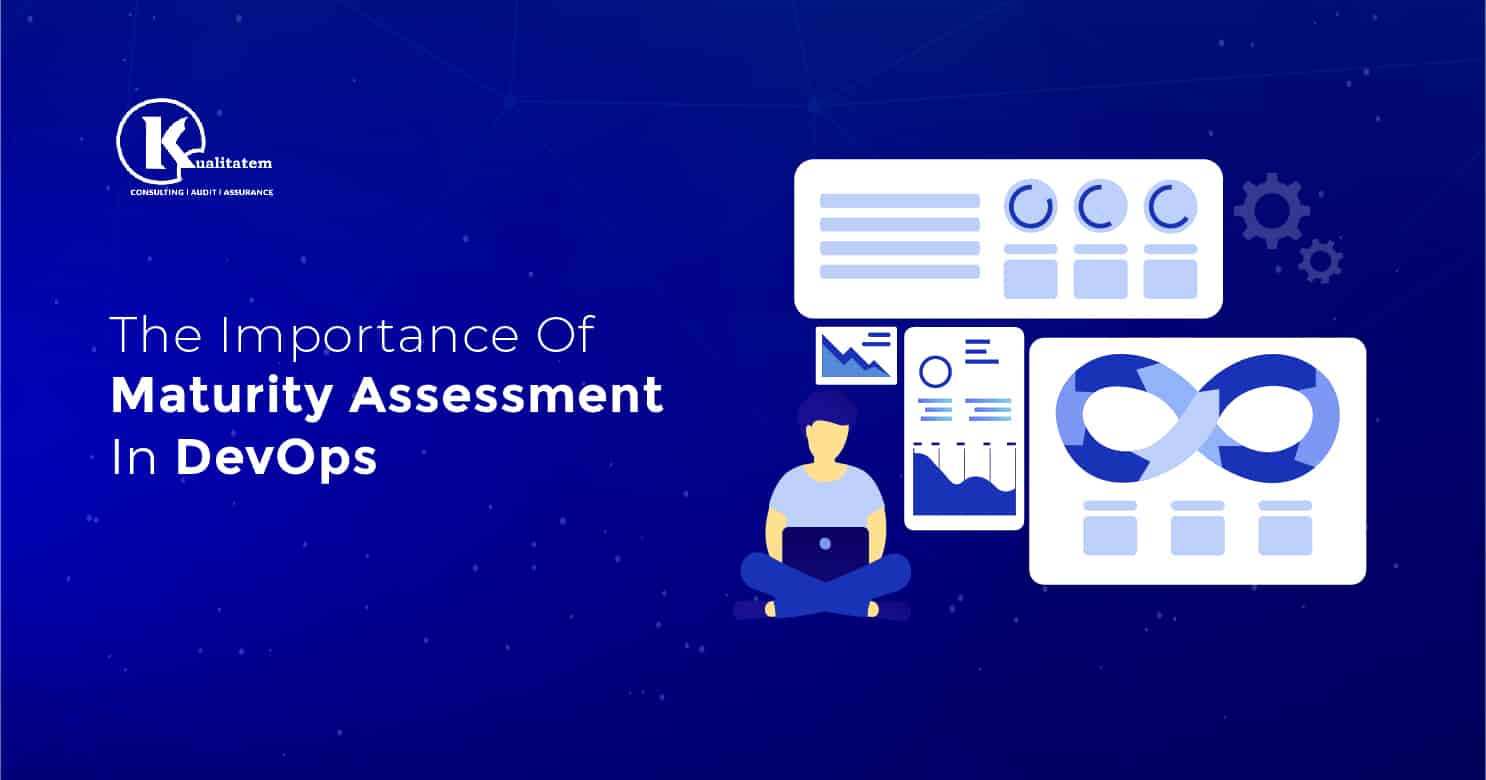The Importance Of Maturity Assessment In DevOps

The IT industry has been influenced by DevOps, which has changed the way teams run and interact in the process chain and workflow. Many companies might have implemented DevOps at some point in their product development journey by now.
Although some are still learning about DevOps’ effect, others have yet to fully appreciate DevOps’ potential. However, the most prevalent misunderstanding about DevOps adoption persists: ‘understanding it as a trip or a destination.’
This is exactly what the ‘DevOps Maturity Model’ is all about!
DevOps Maturity: What It Is and What It Isn’t
DevOps Maturity is defined as a paradigm that decides a company’s direction in the DevOps journey as well as determining what else needs to be done to produce the desired results.
Knowing DevOps adoption as a “continuous path” rather than a “destination” is critical to reaching DevOps maturity.
From both a team and an organizational standpoint, the DevOps maturity paradigm determines development by continuous learning. The greater the strengths and expertise, the better the ability to deal with large-scale and dynamic problems.
According to the experts, an organization’s DevOps maturity can be measured by its skills in the 4 areas below:
- Automation
In the DevOps process, automation is essential for continuous delivery and deployment mechanisms. The automation process in a DevOps loop makes implementation, monitoring, and output easier by automating routine processes, saving time, and increasing resource usage.
- Collaboration and Information Sharing
The most important part of DevOps culture is this. DevOps is all about collaboration and sharing, and teams (whether in the same place or not) will have to coordinate tools and services to achieve shared goals and priorities.
- Strategy and Culture
DevOps must be recognized as a culture-driven strategy that puts together various teams to achieve a shared goal. Transitioning to DevOps entails a change in the organizational culture of the company, which is supported by a series of policies and process structures. As a result, careful preparation and strategy are needed.
- Process and Structure
Modern IT is process-oriented, with systems running through all phases of the Software Development Life Cycle (SDLC). This has progressed in a DevOps setting, where each stage is a series of processes that follow organizational policy and business goals.
What Are the Characteristics of a DevOps Maturity Model?
DevOps maturity is determined in 3 ways by a perfect DevOps maturity model:
- Outlining the steps to achieving DevOps objectives
- The actual state of capabilities is assessed
- Identifying places that you can change
The DevOps maturity block confirms maturity in the building, deploying, and stages of testing through software, data, and architecture levels in accordance with these 3 steps:
DevOps Maturity through Infrastructure
Measures DevOps maturity by the ability to simplify infrastructure by functionality such as integration, simplifying, and allowing self-service provisioning, among other things.
DevOps Maturity for Software/Application
Measures the ease at which code can be moved from design to production. To accomplish this, the implementation pipeline must provide automatic components such as installs, reviews, code coverage, security checks, and tracking.
DevOps Maturity through Data
Measures DevOps maturity by the ability to automate data updates and verify features on a routine basis with DataOps.
Metrics To Measure In A DevOps Maturity Model
To affirm an organization’s degree of DevOps maturity, a number of criteria must be calculated at each point of the DevOps Maturity Model. These metrics can be used to determine which way the company is heading throughout its DevOps path. They are as follows:
- The Mean Time To Recovery (MTTR) from an accidental incident/failure should be zero or as minimal as possible from the time of occurrence.
- The frequency of new code deployments is determined by the implementation frequency.
- The time it takes from the implementation of code to its execution in production should be reasonable.
- The number of finished projects and the pace at which they are released should preferably be high, resulting in a high return on investment (ROI).
- The %age of active deployments should remain higher than the percentage of failed deployments.
The aforementioned criteria and the stage-by-stage approach characterize an organization’s DevOps maturity.
The Advantages of DevOps Maturity
The DevOps maturity model offers a broad variety of market opportunities by providing a full description of an organization’s DevOps status:
Satisfaction
Moving beyond routine tasks to a place where we can concentrate on addressing our company’s particular challenges and putting value in the hands of our clients is what we’ve always come to work for. It feels great to achieve a sense of harmony and unity. And removing the tension that used to come with adjusting the way we construct is a big part of that. When our system is eager for transition, it is less painful.
Potential & Opportunity
DevOps teams that have matured are also well positioned to benefit from advances in tooling and technologies. What is the reason for this? Since they now have a mechanism in place that can adapt to changes quickly.
If you can struggle quickly and realize what didn’t succeed after a few weeks, you’ll have a lot of leeway to do new ideas that could help you pass the needle. Otherwise, you might find yourself evaluating a tool for a year or more. Or, even worse, you never try it because the risk is prohibitively high. The willingness to adapt to change and get reviews easily is a characteristic of mature DevOps teams.
Speed – The ability to move quickly
Organizations that are further down the maturity curve may adjust to change faster and ship features more often. They can ship quality software, get feedback, and adapt to business trends rapidly by engaging in gradual process upgrades, automation, and culture.
Conclusion
We’ve been using a DevOps platform at Kualitatem for a while now, and we’re still searching for new ways to improve. So, how does our tech team’s maturity look? That isn’t to say we know each and everything. That isn’t to say we don’t make mistakes (because we definitely do).
Since we don’t know anything, we need to test concepts often, which necessitates depending on the pipeline’s resiliency. We will easily determine if a new method or procedure is an advancement thanks to automation and continuous measurement. We will gradually introduce emerging technology, with guardrails and calculations, in a regulated manner.
Finally, becoming a seasoned DevOps company means we can manage transition quickly and also help your company’s transformation through DevOps.











